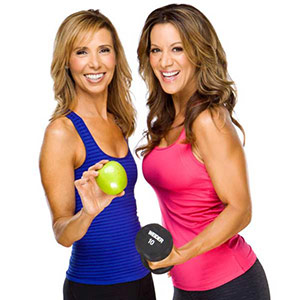Fit Life
July 24, 2017

Is dietary fat a friend or foe? Currently, dietary fat is experiencing a comeback in popularity. From weight loss to improved mental clarity, many health professionals are touting the purported benefits of a high-fat diet. Which raises the question: Should you buy into the hype and hop on the high-fat bandwagon or is moderation the way to go?
In the 1980s and ‘90s, fat was the enemy and we were told to follow a low-fat, high-carbohydrate diet if we wanted to prevent heart disease and diabetes. Unfortunately, obesity, diabetes and heart disease have all been on the rise over the past 30-plus years, and we now know that those nutrition recommendations were wrong. Further research has determined that sugar and refined carbohydrates are the more likely culprits when it comes to weight gain and poor health, because they cause chronically elevated insulin, which is a fat-storage hormone.
Fat is one of your body’s most basic building blocks. Your body is 15-30% fat and your brain is 60-70% fat. In fact, adequate consumption of the right kinds of fat is vital for your brain to properly function. In addition, fat is essential for the production of cell walls, the myelin sheaths that coat each nerve, blood-sugar stabilization, hormone production, and hunger and craving control. There have been a number of recent studies comparing high-fat/low-carbohydrate (HFLC) diets to low-fat/high-carbohydrate diets (LFHC) and the evidence suggests that the HFLC diets are better for weight loss and improvements in markers for inflammation, heart disease and blood sugar.
But not all fats are created equally. The good fats can help you become lean, healthy and full of energy, whereas the bad fats will increase your risk of heart disease, diabetes, inflammation and dementia.
THE GOOD
The healthiest fats are the monounsaturated fatty acids (MUFAs), omega-3s and medium-chain triglycerides (MCTs).
MUFAs are found in almonds, walnuts, avocados and olives (and olive oil) and raise good cholesterol and lower bad cholesterol, reducing your risk of heart disease. When choosing olive oil, choose extra-virgin varieties and make sure to purchase those that are bottled in dark glass and have a recent “harvest” date.
Omega-3s are essential fats and must be consumed because the body does not make them. The omega-3s include eicosapentaenoic acid (EPA), docosahexaenoic acid (DHA) and alpha-linolenic acid (ALA). While EPA is responsible for heart health, DHA is most active in the brain tissue, improving communication between nerves. These two are the most important forms of omega-3s to consume. ALA is converted to EPA and DHA, but at a very low rate. It is still important to consume ALA, but when you are looking to increase your intake of omega-3s, your focus should be on EPA and DHA.
The best sources of omega-3s come from fatty fish, such as wild Alaskan salmon, Pacific halibut, tuna, sardines, herring, mackerel and trout. Plant sources of omega-3s include seaweed, walnuts, flax and chia seeds.
MCTs function very differently from the longer-chain fatty acids. These fats have a carbon backbone of 8 or 10 carbons and are easily digested and used quickly for energy. Diets rich in MCTs are associated with better brain and cardiovascular health. Coconut oil (virgin, organic) is about 60% MCT. Other sources of MCTs are pure MCT oil, which is usually a combination of C8, 10 and 12 (a long-chain fat that acts like a medium-chain fat).
THE BAD
Trans fats and most omega-6 fats top the list of fats that are bad for your health and cause inflammation.
Trans fats are produced when a liquid fat, such as vegetable oil, is turned into a solid (margarine, shortening). These fats increase inflammation in the body and cause the body to produce more of the small, sticky (bad) low-density lipoprotein (LDL) particles that can increase your risk of heart disease. These fats are found in commercially prepared baked goods and fried foods, as well as on the shelf at many supermarkets.
Omega-6 fatty acids are found in vegetable oils (corn, safflower, sunflower, vegetable blends) and are considered pro-inflammatory. A diet high in omega-6s is linked to heart disease, obesity, weight gain, thyroid and hormone imbalances, and inflammation. The typical diet has an omega-6 to omega-3 ratio of over 40:1, much higher than the recommended 4:1 ratio.
NEUTRAL FATS
For many years, we were told to stay away from butter because it is high in saturated fat and would increase our risk of heart disease. A number of studies have shown this not to be true and that butter actually doesn’t have any effect on coronary heart disease or even reduced death rate from cardiovascular disease. Some nutrition experts put grass-fed butter in the healthy category, because it is a good source of butyrate, a short-chain fatty acid associated with reduced inflammation, which is at the root cause of most diseases. Ghee, or clarified butter, can also be put into the good category if it comes from grass-fed cows, as it contains 25% MCTs and short-chain fatty acids. We still caution the use of dairy products from grain-fed cows, as their fat profile is much less desirable.
THE BOTTOM LINE
Fat is an essential macronutrient that plays an important role in blood-sugar regulation, hormone production, brain function and weight regulation. Choosing the right kind of fats is critical to lowering inflammation. As for how much fat to eat? Well, that’s up to you. Your best bet is to include it at every meal.
GREEN GODDESS SMOOTHIE (makes 1 serving)
- 1 cup coconut milk
- ½ avocado, peeled
- 1 cup baby spinach
- 1 cup baby kale
- ½ cup frozen pineapple chunks
- ½ organic apple
- Juice of 1 lime
- 1 Tbsp. chia seeds
- 1 scoop protein powder
Place all ingredients into a blender and blend until smooth. Add crushed ice if you prefer a thicker smoothie.
SPICED NUT AND SEED MIXTURE (makes 3 servings)
- 1 Tbsp. avocado oil
- ¼ tsp. smoked paprika
- ¼ tsp. cinnamon
- 1/8 tsp. pink Himalayan sea salt
- ¼ cup raw pecan pieces
- ¼ cup raw walnut pieces
- ¼ raw pepitas
Mix the oil, paprika, cinnamon and salt together in a bowl. Add the pecans, walnuts and pepitas and stir to coat everything in the spices. Heat a small nonstick pan over low heat. Add the nuts and cook for 4-5minutes, shaking the pan every 45 seconds to prevent the nuts from burning. Pour into a bowl and serve.


